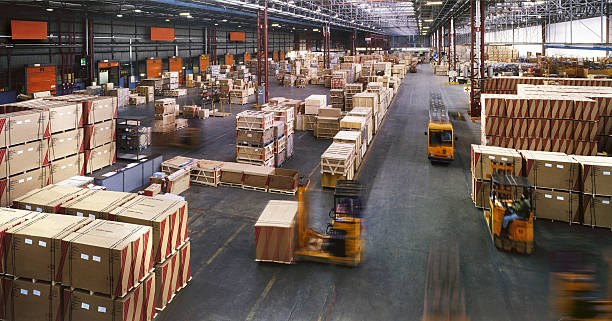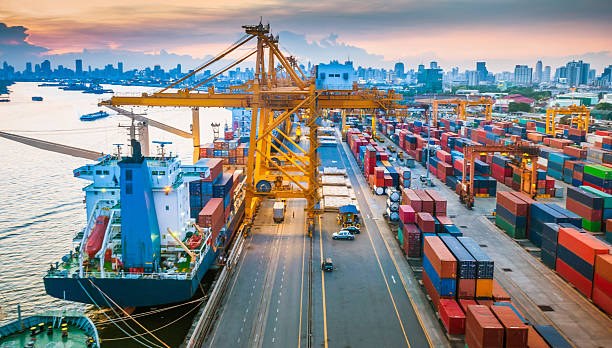How Do Warehousing and Fulfillment Differ?

The success of modern organizations heavily depends on efficient logistics and complex warehousing processes are at the core of this process.
Even though these two names initially appear synonymous, they refer to different supply chain functions. Businesses that want to streamline operations and provide excellent client experiences must understand the differences between warehousing and fulfillment.
In this blog, we will examine the vital roles, opposing functions, and interdependencies of warehousing and fulfillment.
Definition and Purpose of Warehousing
Within authorized facilities, inventory is systematically stored, managed, and controlled as part of the supply chain management process known as warehousing. These buildings, referred to as warehouses, have several uses that support the effective movement of supplies and merchandise.
Here are four key purposes of warehousing:
Inventory Storage

Facilities warehouses provide a secure and controlled environment for storing commodities before distribution. They keep everything in top shape while preventing deterioration, damage, and theft from happening to the goods.
Order Fulfillment
Warehouses are essential to the process of filling orders. They make picking, packing, and shipping goods easier, resulting in precise and efficient customer deliveries.
Risk Mitigation
Warehouses serve as protective barriers against supply chain disruptions. Businesses can lower their risk of running out of goods, experiencing delays, or having transportation problems by keeping inventory in strategic places.
Value-Added Services

Value-added services, such as quality control inspections, labeling, packaging, and assembly, are frequently provided by warehouses. These services assist companies in streamlining operations, modifying products for niche markets, and satisfying client needs.
Warehouses contribute to organizations’ overall performance and competitiveness in today’s dynamic economy by successfully serving these functions.
Key Functions and Activities of a Warehouse
A warehouse performs the following tasks and activities to maintain accurate inventory, enable effective order fulfillment, and guarantee flawless logistics operations within the supply chain.
Inventory Storage and Management
Effective inventory management and storage is one of a warehouse’s main functions. This entails classifying and organizing products according to SKU, size, or demand criteria.
Receiving and Inspecting Goods

When a warehouse receives cargo from a supplier, it conducts extensive inspections to ensure that the items’ quantity, quality, and condition are accurate. This includes looking for any flaws, differences, or damages.
Order Picking and Packing
By selecting the appropriate items from the inventory and packing them for shipment, warehouses oversee completing customer orders. Effective order-picking techniques, including zone picking and batch picking, are used to cut down on time and increase productivity.
Inventory Tracking and Control
To keep an eye on the movement of inventory inside the building, warehouses use sophisticated tracking and control systems. This includes using barcodes, RFID tags, or other technologies to track things, update inventory data, and guarantee proper stock levels.
What is Fulfillment Center?
A crucial component of the supply chain is fulfillment, which includes the procedures involved in order processing, product packaging, and client delivery. It focuses on ensuring customers’ orders are promptly and precisely filled to optimize satisfaction. These centers can process both B2B and B2C orders.
What Do Fulfillment Centers Do?

Here are four key purposes of fulfillment:
Order Processing and Management
Order processing and management efficiency are the responsibility of fulfillment centers. This entails verifying order information, confirming product availability, and organizing order fulfillment services.
Product Packaging and Labeling
Fulfillment facilities are experts in carefully labeling and packaging goods to ensure brand presentation and safe transit. To improve the customer experience, they use suitable packaging materials, adapt packaging based on product needs, and incorporate branding aspects.
Shipping and Delivery Coordination

Shipping companies and fulfillment centers work together to plan the efficient delivery of goods from the warehouse to the customer’s doorstep. To give customers real-time information on their orders, they choose the best shipping options, create shipping labels and track shipments.
Returns and Exchange Handling
Returns and exchanges are handled through fulfillment facilities as well. They handle return requests, examine returned goods, and aid in the speedy handling of refunds or exchanges.
In the constantly changing world of e-commerce, fulfillment centers play a critical role in providing excellent consumer experiences and fostering corporate success.
Key Functions and Activities of a Fulfillment Center
The supply chain relies heavily on fulfillment centers, which are at the forefront of effective order fulfillment. The following are the key functions and activities carried out by a fulfillment center:
Order Processing and Management
Order processing is handled entirely by fulfillment centers. This includes confirming consumer information, accepting orders, and checking the availability of products. They use cutting-edge technology and order management systems to ensure accurate and effective order processing.
Product Packaging and Customization

Fulfillment facilities are experts at carefully wrapping goods. To provide customers with a satisfying unboxing experience, they carefully choose packaging materials, tailor packaging based on the product’s size and fragility, and include branding components.
Inventory Management and Control
To successfully manage stock levels, fulfillment facilities retain real-time inventory visibility. They monitor inventory levels, maintain inventory records, and implement inventory management systems to prevent stockouts or overstocking.
Shipping and Delivery Coordination
Fulfillment centers and shipping centers strictly regulate order shipping and delivery. To guarantee prompt and correct deliveries, they choose the best shipping options, create labels, and track shipments.
All these activities work together to guarantee order fulfillment is quick and easy, ultimately increasing customer happiness and loyalty.
Fulfillment Center vs. Warehouse Centers
The following table outlines the difference between fulfillment centers and warehouses:
| Warehousing Centers | Fulfillment Centers | |
| Purpose | Inventory management and storage | Customer orders are efficiently processed, packaged, and delivered. |
| Order Processing | Manage supplier bulk shipments | Can manage B2B or B2C orders |
| Inventory Management | Manage inventory levels and maximize storage space | Ensure timely order fulfillment, and manage real-time inventory data. |
| Technology and Automation | Might use technology, but the main emphasis is on the physical handling and storage of the commodities. | Heavily rely on automation and technology for efficient operations |
| Customer Experience | Indirectly influence customer experience by ensuring inventory availability | Direct attention to providing precise packaging, prompt order fulfillment, and effective shipping to offer excellent client experiences |
| Integration with E-commerce Platforms | The degree of integration with e-commerce platforms might not be as high. | Allows for direct order placement, real-time inventory updates, and order tracking while seamlessly integrating with e-commerce platforms |
Businesses must thoroughly understand these differences between warehouses and fulfillment centers to plan their logistics operations effectively.
Businesses can optimize their supply chain, enhance customer satisfaction, and drive operational efficiency by choosing the appropriate solution.
Conclusion
In conclusion, Shipcarte fulfillment centers and warehouse facilities each have unique yet complementary functions in the supply chain.
While fulfillment centers specialize in effective order processing, packaging, and on-time delivery, warehousing facilities primarily concentrate on inventory storage, management, and optimization.
The symbiotic interaction between warehouses and fulfillment centers ultimately drives the successful flow of goods in today’s dynamic business environment.

